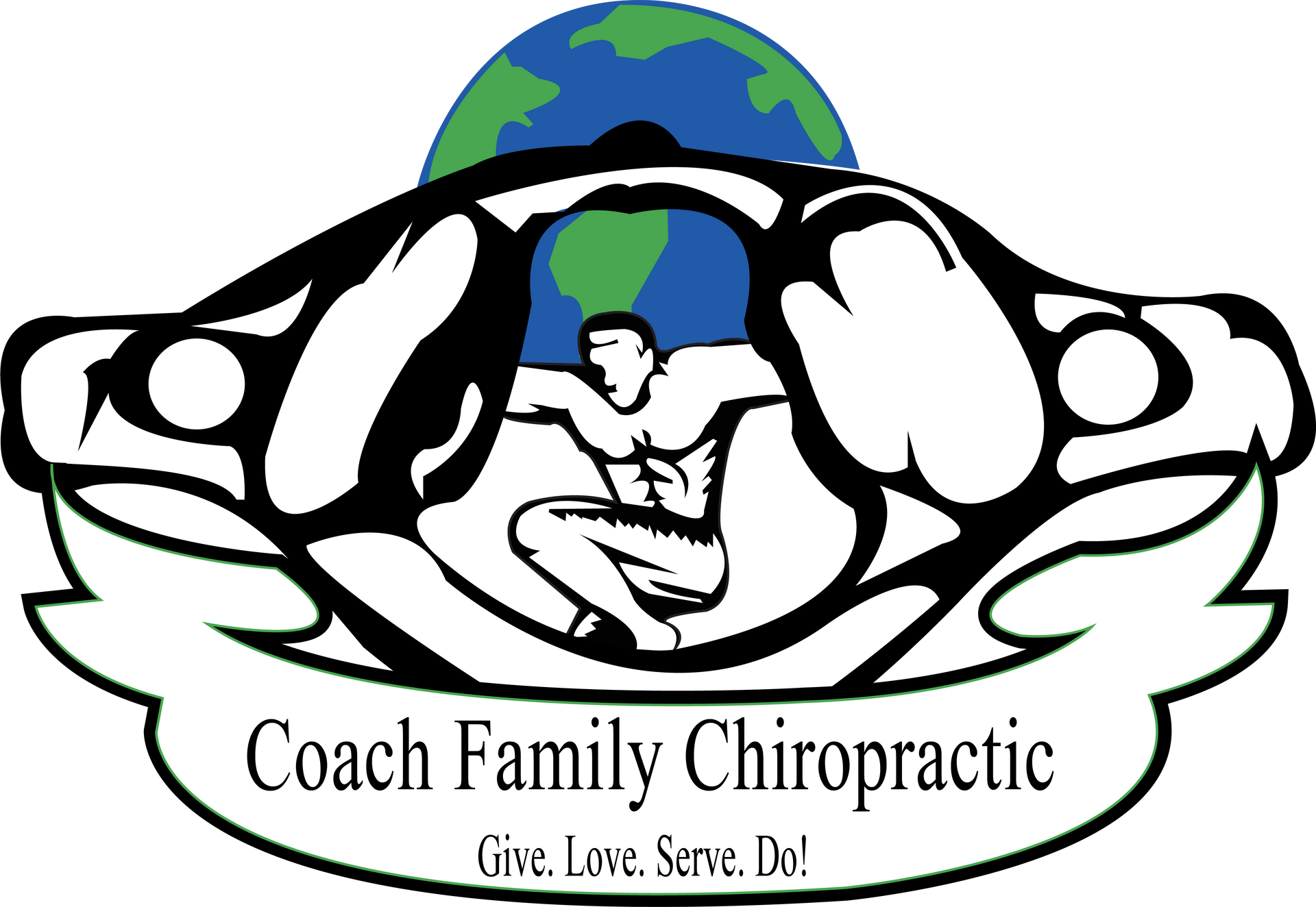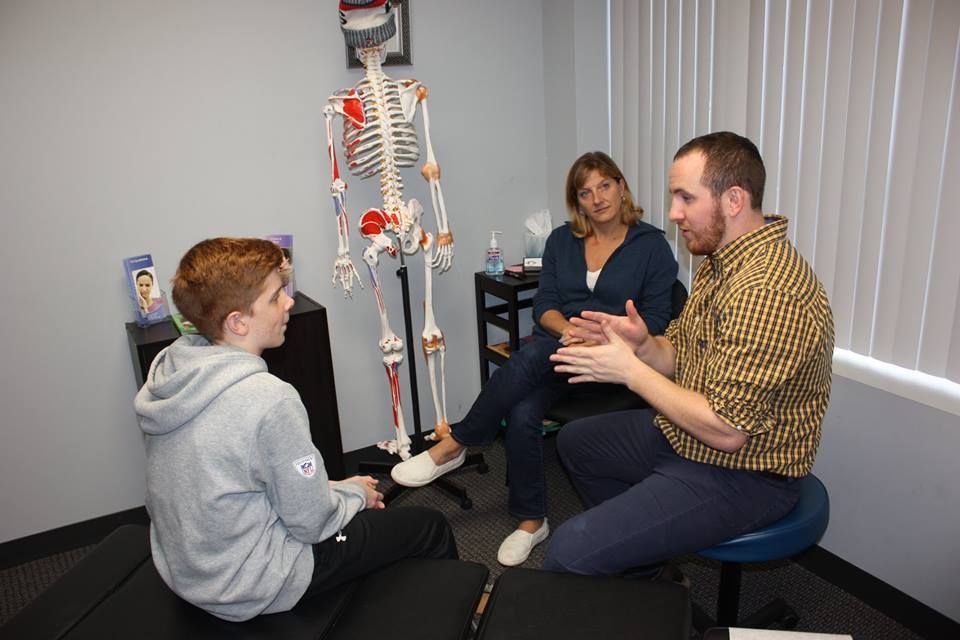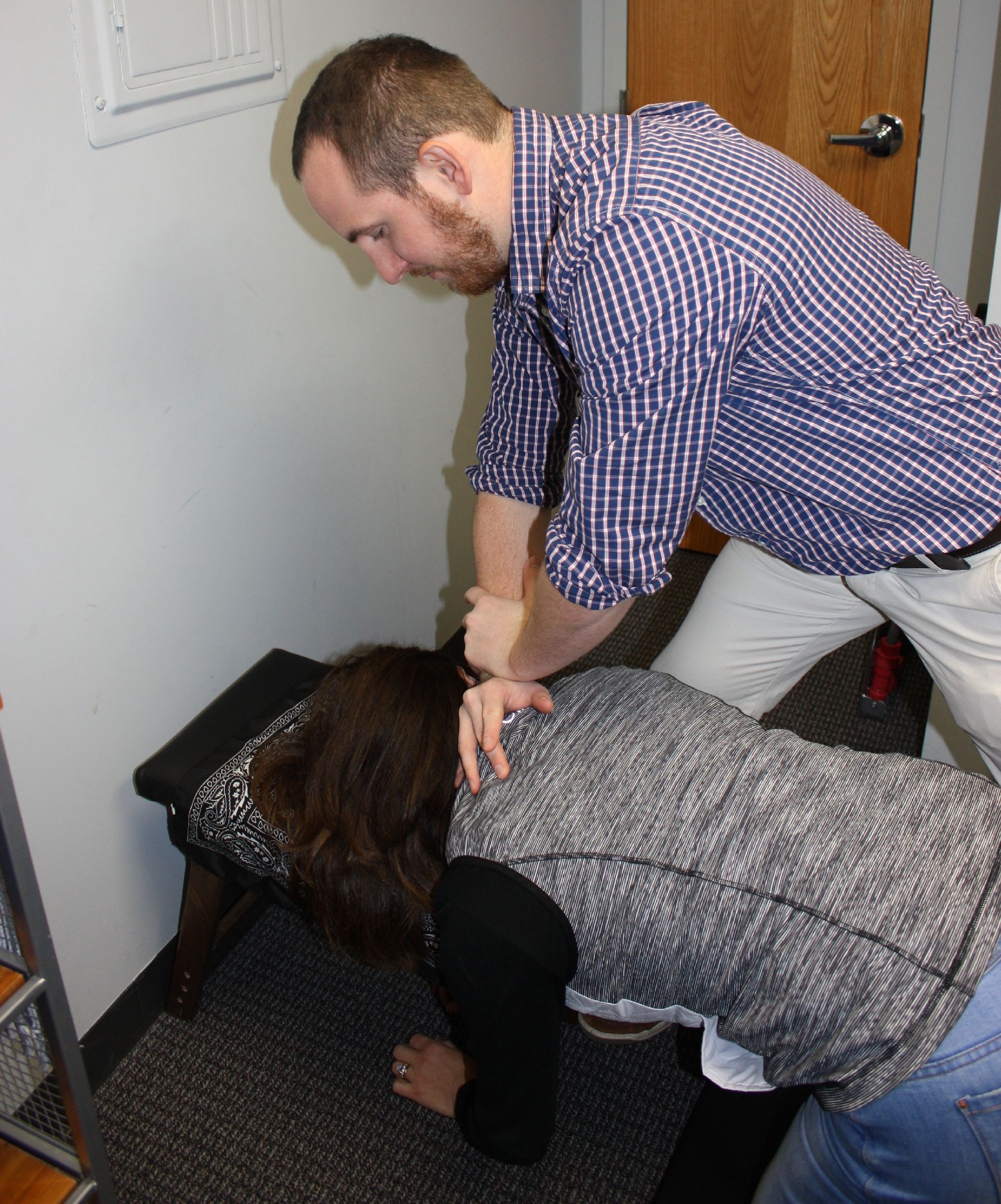How Does Chiropractic Care Relieve Sciatica Pain?
By: Sean Bryan DC
How Chiropractic care relieve Sciatica Pain
If you're struggling with sciatica pain, you're not alone. This debilitating condition can disrupt your daily activities and diminish your quality of life. Fortunately, there is hope for relief. Chiropractic care offers a non-surgical treatment approach that can effectively alleviate sciatica pain and promote healing.
In Dedham, MA, chiropractors specialize in providing comprehensive care for individuals suffering from sciatica. Their expertise and gentle touch can help reduce inflammation, restore proper alignment, and relieve the pressure on the sciatic nerve, leading to significant pain relief and improved mobility.
Key Takeaways:
- Chiropractic care in Dedham, MA, offers non-surgical treatment options for sciatica.
- Chiropractors can help reduce inflammation and restore proper alignment.
- Gentle chiropractic techniques can alleviate pressure on the sciatic nerve and provide long-term relief.
- Seeking care from a sciatica specialist is crucial for effective treatment.
- Complementary therapies, such as physical therapy, can enhance the benefits of chiropractic care for sciatica relief.
Understanding Sciatica and its Causes
In this section, we will discuss what sciatica is and the common causes of this condition. Sciatica refers to the pain that radiates along the path of the sciatic nerve, which branches from your lower back through your hips and down each leg.
The sciatic nerve is the longest nerve in your body and plays a crucial role in connecting the spinal cord to the leg and foot muscles. When this nerve gets compressed or irritated, it results in sciatic nerve pain, commonly known as sciatica.
Some of the common causes of sciatica include:
- Bulging or herniated disc: When the intervertebral discs that cushion the bones of the spine bulge or herniate, they can press on the sciatic nerve.
- Spinal stenosis: This condition occurs when the spinal canal narrows, putting pressure on the nerve roots, including the sciatic nerve.
- Piriformis syndrome: The piriformis muscle, located deep in the buttock, can sometimes irritate or compress the sciatic nerve.
- Injury or trauma: A fall or accident that injures the spine or buttocks can lead to sciatica.
- Spinal misalignment: Poor posture or spinal misalignment can cause compression of the sciatic nerve.
If you're experiencing sciatica, you may have symptoms such as:
- Sharp, shooting pain in the lower back, buttocks, and leg.
- Tingling or numbness in the leg or foot.
- Weakening of the leg muscles.
- Difficulty standing, walking, or sitting for extended periods.
There are various treatment options available for sciatica, depending on the severity and underlying cause of the condition. In the next section, we will explore different treatment approaches, including sciatica exercises and sciatic nerve pain treatments.
Chiropractic Techniques for Sciatica Treatment
In this section, we will explore the specific chiropractic techniques used for treating sciatica. Chiropractors in Dedham, MA, offer a range of non-surgical treatments aimed at providing effective relief from sciatic nerve pain.
Spinal Adjustments: One of the main chiropractic techniques used for sciatica treatment is spinal adjustments. Chiropractors use their hands or specialized tools to apply controlled, gentle force to the spine, realigning vertebrae and reducing pressure on the sciatic nerve. These adjustments help improve spinal function and alleviate pain.
Spinal Decompression Therapy: Another technique commonly utilized by chiropractors for sciatica treatment is spinal decompression therapy. This non-invasive therapy involves gently stretching the spine, creating negative pressure that helps retract herniated or bulging discs. By relieving pressure on the sciatic nerve, spinal decompression therapy can significantly reduce pain and promote healing.
Other Chiropractic Methods: Alongside spinal adjustments and decompression therapy, chiropractors may use various other techniques to address sciatica. This can include soft tissue therapy, such as massage and trigger point therapy, to relieve muscle tension and reduce inflammation. Additionally, chiropractors may offer lifestyle recommendations, exercises, and stretches to help strengthen the spine and prevent future sciatica episodes.
Benefits of Chiropractic Care for Sciatica
- Provides non-surgical treatment option for sciatica
- Addresses the root cause of sciatic pain
- Reduces reliance on pain medications
- Promotes natural healing and long-term relief
- Improves spinal function and mobility
- Enhances overall well-being and quality of life
Chiropractic care offers a holistic and non-invasive approach to sciatica treatment. By utilizing specific chiropractic techniques, chiropractors help individuals find lasting relief from the debilitating pain caused by sciatica.
Benefits of Chiropractic Care for Sciatica
Chiropractic care offers a range of benefits for individuals suffering from sciatica. Not only does it provide effective pain management in Dedham, MA, but it also improves mobility and overall well-being.
Alleviating Pain: Chiropractic treatments specifically target the underlying causes of sciatica, helping to relieve pain and discomfort. Through spinal adjustments and other techniques, chiropractors can realign the spine, reduce inflammation, and alleviate pressure on the sciatic nerve, providing much-needed relief.
Improving Mobility: Sciatica can severely limit your mobility, making it challenging to carry out daily activities. Chiropractic care focuses on restoring proper alignment and function to the spine, allowing for improved range of motion and flexibility. By reducing nerve irritation, chiropractors help individuals regain their mobility and return to their regular activities.
Enhancing Overall Well-being: In addition to pain management and improved mobility, chiropractic care promotes overall well-being. By optimizing spinal health, chiropractic adjustments support the body's natural healing processes, boosting the immune system and promoting better physical and mental health. Many individuals experience reduced stress levels and improved sleep quality as a result of chiropractic care.
It's important to seek care from a sciatica specialist when dealing with this condition. Chiropractors in Dedham, MA, undergo specialized training to effectively diagnose and treat sciatica. Their expertise and knowledge ensure that you receive tailored care and personalized treatment plans to address your specific needs.
Complementary Therapies for Sciatica Relief
In addition to chiropractic care, several complementary therapies can play a crucial role in providing relief from sciatica. These non-surgical treatments offer alternative approaches to manage the pain and discomfort associated with this condition. Incorporating these therapies alongside chiropractic care can optimize the effectiveness of sciatica treatment.
1. Physical Therapy:
Physical therapy plays a vital role in the comprehensive treatment of sciatica. A skilled physical therapist can develop a personalized exercise program focusing on strengthening the muscles surrounding the sciatic nerve. These exercises aim to improve flexibility, reduce inflammation, and alleviate compression on the nerve, promoting pain relief and enhanced mobility. The physical therapist may also incorporate techniques such as manual therapy, stretching, and ultrasound therapy to further optimize the outcomes of the treatment.
2. Acupuncture:
Acupuncture, a traditional Chinese medicine practice, involves the insertion of thin needles into specific points on the body. This therapy aims to stimulate the body's natural healing processes and restore the balance of energy or Qi. For individuals with sciatica, acupuncture can help alleviate pain, reduce inflammation, and promote the release of endorphins, which are natural pain-relieving chemicals. Many patients find acupuncture to be a safe and effective complementary therapy for sciatica relief.
3. Massage Therapy:
Massage therapy offers a holistic approach to managing sciatica symptoms. Skilled massage therapists apply targeted techniques to release tension, improve blood circulation, and reduce muscle spasms. By addressing the underlying musculoskeletal imbalances, massage therapy can help reduce pain and increase range of motion. Various massage modalities, such as Swedish massage, deep tissue massage, and trigger point therapy, can be utilized based on the client's specific needs.
4. Yoga and Stretching:
Yoga and stretching exercises can be highly beneficial for individuals experiencing sciatica. These gentle movements improve flexibility, strengthen the core muscles, and promote proper alignment of the spine. Engaging in yoga or specific stretching routines can help relieve sciatic nerve pain, reduce inflammation, and prevent future episodes. It is important to consult with a qualified instructor who can guide you in performing the correct poses and movements to avoid exacerbating your condition.
- Physical therapy
- Acupuncture
- Massage therapy
- Yoga and stretching exercises
These complementary therapies, when combined with chiropractic care, can provide a comprehensive and holistic approach to sciatica treatment. Whether it's physical therapy near you or exploring acupuncture options, it's essential to consult with a healthcare professional experienced in non-surgical sciatica treatment to guide you through a personalized plan towards optimal relief and recovery.
Conclusion
Seeking professional help for sciatica treatment is crucial for individuals looking for lasting lower back pain relief. Chiropractic care, offered by experienced chiropractors in Dedham, MA, has proven to be highly effective in managing and alleviating sciatica pain.
By employing specialized techniques such as spinal adjustments and spinal decompression therapy, chiropractors can target the root cause of sciatica and provide targeted relief. These non-surgical treatments not only help in pain management but also enhance overall mobility and well-being.
In conjunction with chiropractic care, complementary therapies like physical therapy can aid in optimizing sciatica relief. Physical therapy, available near Dedham, MA, complements chiropractic treatments by promoting flexibility, strength, and balance, leading to better outcomes and improved quality of life.
When it comes to pain management and lower back pain relief, it is important to consult a dedicated sciatica specialist. Seeking professional help from experts in Dedham, MA, ensures that you receive the most suitable treatment plan tailored to your specific condition, helping you regain control over your life, free from the constraints of sciatica pain.
FAQ
How does chiropractic care relieve sciatica pain?
Chiropractic care can relieve sciatica pain by addressing the root cause of the problem. Chiropractors in Dedham, MA, use non-surgical treatment options such as spinal adjustments and spinal decompression therapy to alleviate pressure on the sciatic nerve, reduce inflammation, and promote healing.
What is sciatica and what causes it?
Sciatica is a condition characterized by pain that radiates along the path of the sciatic nerve, which runs from the lower back down through the hips, buttocks, and legs. Common causes of sciatica include herniated discs, spinal stenosis, and degenerative disc disease.
What chiropractic techniques are used for sciatica treatment?
Chiropractors in Dedham, MA, use various techniques to treat sciatica. These may include spinal adjustments, spinal decompression therapy, massage therapy, and stretching exercises. Each treatment approach is tailored to the individual's specific needs and condition.
What are the benefits of chiropractic care for sciatica?
Chiropractic care offers several benefits for individuals with sciatica. It can provide pain relief, improve mobility, enhance spinal alignment, reduce inflammation, and promote overall well-being. Consult a sciatica specialist in Dedham, MA, for personalized and comprehensive treatment.
Can complementary therapies help with sciatica relief?
Yes, complementary therapies such as physical therapy can complement chiropractic care for optimal sciatica relief. Physical therapy helps strengthen the muscles, improves flexibility, and promotes recovery. It plays a vital role in pain management and overall rehabilitation.
What is the importance of seeking professional help for sciatica treatment?
Seeking professional help for sciatica treatment is crucial to accurately diagnose the underlying cause of the pain and develop an effective treatment plan. Chiropractors and other healthcare professionals specializing in sciatica can provide targeted and personalized care to alleviate pain and promote long-term relief.
How can chiropractic care provide lasting lower back pain relief?
Chiropractic care focuses on addressing the root cause of lower back pain, including sciatica. By restoring proper spinal alignment, reducing nerve impingement, and promoting healing, chiropractic treatments offer long-lasting relief from lower back pain. Regular chiropractic care can also help prevent future episodes of pain.




